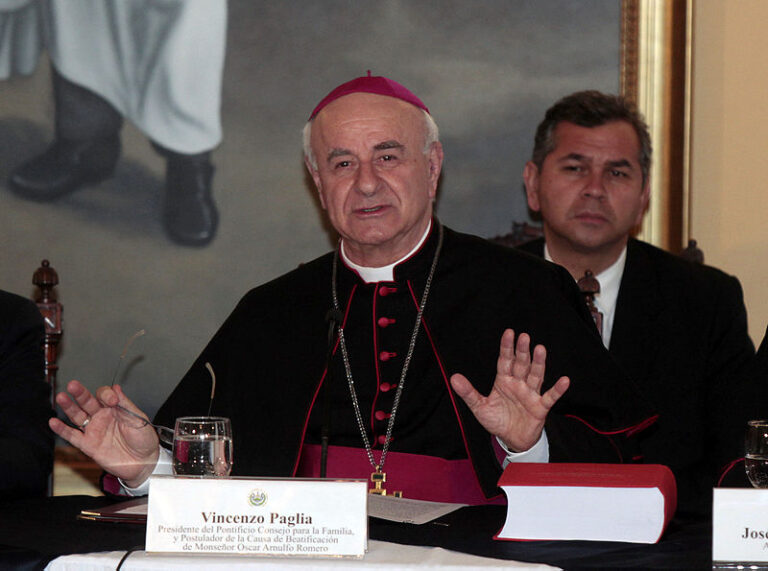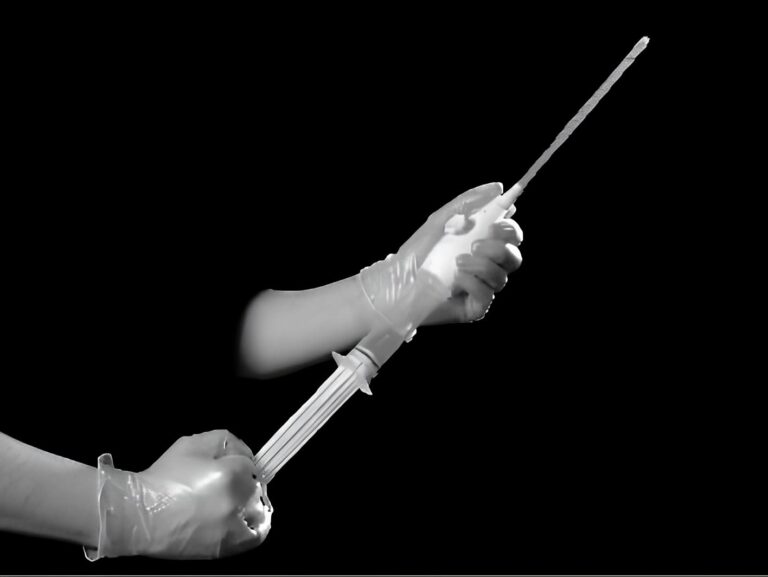State seeks to cut social spending by cutting poor men
It now remains for the United States government to set a sensible example to the world by offering a bonus or a yearly pension to all obviously unfit parents who allow themselves to be sterilized by harmless and scientific means. In this way the moron and the diseased would have no posterity to inherit their unhappy condition. The number of the feebleminded would decrease and a heavy burden would be lifted from the shoulders of the fit. Such a bonus would be a wise and profitable investment for the nation. It would be the salvation of American civilization. It would enable thousands of parents to get a firm footing on the path of life and enable them to give some care to those children they have already borne. Margaret Sanger. (“The Function of Sterilization.” Birth Control Review, Volume X, Number 10 (October 1926), 299.)
Margaret Sanger would be proud. For the first time since WWII a program to cut social spending by sterilizing “low income and minority” men has been set up. Not only that, it has survived the first year and is up For renewed funding. According to the Washington State Department of Health (DOH), Governor Gary Locke’s budget proposal includes $300,000 to fund the Washington State Vasectomy Project for an additional two years past June l997.1 If the legislature agrees the project would sterilize between 900 and 950 poor men each year and would save the state, proponents say, between nine and eleven million dollars in social spending.2
Sterilizing the poor
In a report on the project’s first year, administrators noted that most men in the United States who choose to have vasectomies are “well educated” and “have incomes above 300% of the poverty level.” Low income and minority men, the conventional wisdom said, would not “utility” the procedure because it is not usually available in the health clinics men use. Further, many thought those low income and minority men “were not interested” in the procedure. The Washington State Department of Social and Health Services decided to test that premise and brought in the Department of Health to implement the project through its network of local health departments, free standing clinics and Planned Parenthood affiliates? During its first year, 23 local agencies and over 80 physicians participated in the project, which is expected to have sterilized about 950 men by the end of June l997.
In order to be sterilized at taxpayers expense, according to the Project’s guidelines, a man has to be at least 18 years old (21 if the Federal government pays for the vasectomy), have an income at or below 200% of the poverty level, be a Washington State resident and have no other coverage, either privately or through Medicaid, for vasectomy. Further, the man must wait at least 30 days between signing a consent form for the procedure and actually having it done, and most of the men waited longer than 30 days. Doctors, almost all of whom are in private practice, either used the ‘“traditional” surgical method or the more “innovative” no scalpel technique and all the men were required to undergo a test after the procedure to insure that their semen “is completely free from sperm.”
Each procedure costs the government $332.50, which included all the pre-procedure counseling and post- operative testing. The costs of marketing the project to minority and low-income men were sometimes covered.
One of the Project’s more curious aspects concerns how its funds were obtained. According to Project organizers, early response and startup costs depleted the initial budget in the first eight months. In order to keep the Project going, Department of Health officials moved a total of $150,000 from the Office of Maternal and Child Health’s budget, which is funded under Title V of the Social Security Act. But Title V funds are intended, according to the Department of Health and Human Services’ Maternal and Child Health Board (MCHB), to provide health care for “children with special health care needs.”3
According to MCHB, “[s]tate Title V programs support — by directly operating programs or by funding local providers — such services as prenatal care; child health services including immunizations, well-child examinations, and treatment or referral; school health services and education programs; and specialized health services and family support for children with actual or suspected developmental disabilities or chronic illnesses.” Repeated calls to MCTHB to inquire how providing free vasectomies to low-income men might qualify for funding under Title V were not returned before deadline.
Who Was Sterilized
Although the project only recently began collecting data about the race and ethnicity of the men sterilized, project coordinators did gather information on their incomes, ages and family sizes. According to a survey of 488 of the program’s participants, the average sterilized man was almost 33 years old, the father at least one child and made $1,355 per month. Forty-five percent of the men had incomes below the federal government’s poverty level.
Human life calculus
Project organizers estimate that by sterilizing 950 men through June 1997 the State of Washington saved itself at least $9.5 million on just the cost of delivering the children the vasectomies “averted.” Using an estimate from the population control group AVSC International, which specializes in sterilizations, project organizers calculated that each vasectomy would save the State $10,064 per man (2.0 children “averted” multiplied by $5,034 per birth). The organizers brag that the procedure has a benefit/cost ratio of well over $30 and this, organizers say, is “conservative:”
“The total costs averted estimates and benefit/cost ratio estimates are very conservative because they do not take into account the following (a) they do not include savings on birth control methods for the men’s partners; (b) they do not include savings on abortions averted; (c) they assume the $5,034 cost for prenatal care and delivery will not increase; and (d) they do not take into account the other public costs associated with health and psycho-social services arising from unintended pregnancies.”4
But lest anyone suspect that the State of Washington cared more about its public purse than about the quality of life of its poorer citizens, the project went out of its way to provide an appendix of testimonial letters from clients and to note:
“The men who have received vasectomies — as well as their partners and families — will experience greater psychological and physical wellbeing with the concern of an unintended pregnancy eliminated. Men and their families will also have the capacity to experiencing a higher standard of living.”5
A Pox on the poor?
No matter what feelings of good will some men might feel after sterilization, there can be little doubt of the program’s controversial nature. It cannot, for example, avoid giving the impression that given a choice between being born poor and simply being born, Washington State would rather see you not born. And although the program’s thirty day waiting period offers some safeguard against coercion, there is always the danger that budget-sensitive administrators might pressure men whose children are thought expensive into vasectomies they would rather not have.
Unfortunately, both Washington State and Oregon (a state which has expressed interest in the Project) have histories of using coercion to convince men to undergo vasectomy.
Beginning in the early l960’s, according to the United States Department of Energy’s Advisory Commission on Human Radiation Experiments (ACHRE), both states allowed convicts in the State prison system to be used for testicular irradiation experiments which required vasectomies afterward, These experiments were often conducted under questionable ethical conditions, as documented by ACHRE’s final report. No real effort appeared to have been made to get informed consent from the inmates and, in Oregon, pre-program psychiatric screening appears to have been “cursory.”6 A similar program in Washington State was discontinued in 1970 after reviewers severely questioned the programs ethical procedures. One reviewer wrote in objection:
There is no doubt but what the prison setting is an ideal setting for this type of research.… I suppose concentration camps provided ideal settings for the research conducted in them.…
I am not against high risk research. I have engaged in some in myself I am not against federally sponsored research. I have engaged in some myself. However, the risk should be commensurate with the probable benefits to be received by the population or other like it to follow. I don’t think we can argue that in this case. 7
On the basis of these concerns and their own observations, Washington State’s Department of Institution’s Human Rights Review Committee recommended the experiments termination noting, in part, that it seems clearly inconsistent with the standards laid down by the Nuremberg Code and “it is largely irrelevant whether or not a volunteer declares his ‘desire to undergo vasectomy’ since there is no assurance that his real reasons would be ethically-morally acceptable or that his reasons (whatever they may be) will stand the test of reality after release.”8
Washington State’s Vasectomy Project does not currently appear as coercive as the State’s previously supported vasectomy programs. Still, with budgetary pressures looming, ethical considerations must be given great weight. For example, should flexible economic circumstances justify irreversible decisions? Is it certain that all of the 23-year-old men who accepted sterilization from the Project will live their entire reproductive lives below the poverty line? Or that, even if they did, they will still not want children at age 33 or 43?
Where from here
Washington State Legislators must decide before the end of May whether to fund the Project for an additional two years. Whether they do or not the idea has already begun to draw some interest. Representatives from Oregon and Delaware have reportedly investigated the possibility of starting similar Projects in their states and AVSC International plans to include a short, approving, notice about the program as part of an upcoming submission to the American Journal of Public Health.
Endnotes
1 Interview with Jack Williams, administrator for community and family health, Washington State Department of Health, 19 March 1997.
2 Maura Craig, Family Planning and Reproductive Health, Washington State Department of Health, Washington State’s Vasectomy Project: A progress report, 1.
3 Department of Health and Human Services Maternal and Child Health Board, State Programs Fact Sheet, www.os.dhhs.gov/hrsa/mchb/stateprg.htm
4 Washington State’s vasectomy Project: A progress report, 11.
5 Ibid., 5.
6 Final Report, Advisory Committee on Human Radiation Experiments. US Government Printing Officer chapter 9
7 Ibid.
8 Ibid.










